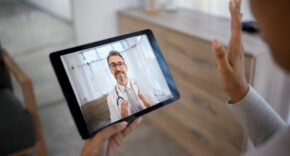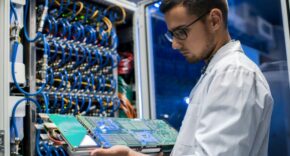
Peter Ruffley, CEO, Zizo
The market for IoT in healthcare is projected to reach $534 billion by 2025, driven in part by Covid and in also by new societal attitudes. It’s clear that new technology can transform industries and every aspect of life from healthcare to retail, for instance. Artificial Intelligence, Machine Learning, IoT, Robotics and Industry 4.0 are all common buzzwords now and hold great promise.
New technologies such as these have helped the NHS to quickly adapt to the recent pandemic, giving teams the tools to allocate and deploy available resources more efficiently. IoT has enabled the use of health and care devices to collect data and monitor patients both in and out of hospital for instance, reducing the number of hospital admissions and increasing patient satisfaction.
As technology continues to flow into multiple aspects of every day function, there are undoubtedly challenges that will arise, but the subsequent benefits far outweigh the challenges along the way. Peter Ruffley, CEO, Zizo highlights these in the context of the digitisation of the healthcare sector.
IoT technology
Transitioning elements of healthcare to the virtual clinic has been crucial in fighting the pandemic and reducing the strain on the NHS. IoT has enabled important new advances in remote monitoring through connected devices that can provide healthcare professionals with the ability to monitor on-going patient health and vitals from home. Data can be accessible to clinical teams in real-time, also allowing them to monitor a range of key indicators, such as: glucose levels, temperature, heart rates, blood pressure and other key markers. Moreover, the ability to monitor behaviour changes, such as how many times an older individual uses the bathroom, for example, could indicate underlying health concerns before they escalate. Specialists can be alerted when there is a concerning change or a medical emergency to allow for immediate intervention.
With IoT collecting and providing data automatically, staff need not use their time manually fetching data and reviewing information, freeing up time for clinicians and improving the efficiency of processes. In turn this reduces the waiting time for patients and allows for smart prioritisation for those who require faster care. Paired with video conferencing and telephone calls instead of face-to-face appointments, doctors can reach and assess more patients per day to ensure that all health concerns are addressed. It has greatly improved accessibility and productivity in healthcare, while keeping patients safe and in the comfort of their own homes.
Improving standards of care nationwide
In rural and remote areas medical care has been known to fall behind standards elsewhere across the country, but technology can change this. Technology and healthcare applications can be used to provide healthcare workers with access to interact with and monitor people in places that have been traditionally harder to reach, and crucially Edge Computing can be used to increase performance and responsiveness for this digitisation.
By computing, processing and analysing data, with the same level of quality at the Edge, efficiency and patient experience will be improved, while reducing time and cost. It also eliminates any unnecessary delay and can improve further areas such as clinical trails by allowing the reach of these experiments to extend further than ever before, and occur more frequently and accurately.
Interoperability of data
There are of course challenges in the digitisation of the healthcare industry, and deploying IoT widely relies on crucial data integration of multiple points. Clinical teams must ensure the efficacy and accuracy of these tools at all times in order for data to be understood by all, and to drive informed and smarter decisions on patient care. Merging data across a central location allows for unobstructed sharing for this valuable decision making, but there must be agreed best practices in place to ensure that different devices from different teams can interact and exchange information with each other.
The challenge lies in a lack of standards and data interoperability between IoT devices, as it results in inconsistencies in device implementation. There must be real checks and measures, along with known baselines based on real world experience, to ensure that data is assessed correctly and used accurately. After all, patient care comes first, so regulations and processes must be in place to keep standards high across all settings.
Patient data protection
Data breaches and data mistrust are key terms in the media, as headlines often hit about the latest data leak, and data protection is a concern for many – especially when it comes to such a sensitive subject such as healthcare. Personal health records and location data are potential targets of cyber attacks, and it’s a challenge that the healthcare industry must address. Luckily, there are many basic security actions that manufacturers and providers of IoT devices can take to mitigate these risks, by implementing security measures into the devices, including authentication and encryption.
Conclusion
Introducing further digitisation into healthcare clearly has great benefits, and by choosing the correct IoT providers the challenges can be mitigated. We can expect to see technology adoption continue to rise in order to improve patient care, and importantly the speed at which patients are seen. Connected devices are the future and will leverage intuitive data analysis that ultimately saves lives and streamlines operational efficiency for health services across the nation. By reducing the myths surrounding patient data and ensuring that connected devices are managed as part of one centralised system, healthcare providers can gain endless value and benefits from IoT.












